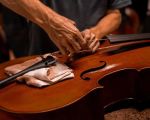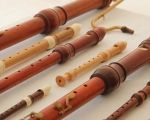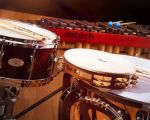- 1. What is Jazz Music?
- 2. Why Instruments Are Essential to Jazz
- 3. Key Instruments in Jazz Music
- 4. How Instruments Work Together in Jazz
- 5. The History of Jazz Instruments
- 6. Real-Life Example of a Jazz Band
- 7. Final Thoughts on Jazz Instruments
1. What is Jazz Music?
Jazz is a dynamic and influential genre of music that has been around for over a century. Originating in the early 20th century in the United States, jazz is known for its improvisation, complex rhythms, and expressive style. Unlike other forms of music that follow strict structures, jazz is characterized by its flexibility, with musicians often creating new melodies and harmonies on the spot. This improvisational nature allows for a lot of creativity, making jazz both exciting and unpredictable.
Jazz music has evolved over time, incorporating various influences from blues, ragtime, and classical music. It has influenced many other genres, including rock, pop, and R&B. But what truly defines jazz is its instrumentation. The instruments used in jazz are as diverse as the genre itself, and each one plays an integral role in creating the signature sound of jazz. In this article, we’ll explore the different instruments used in jazz music and how they contribute to the genre’s rich sound.
2. Why Instruments Are Essential to Jazz
In jazz music, instruments are the driving force behind the melodies, rhythms, and improvisation that define the genre. The choice of instruments in a jazz band influences not only the overall sound but also how the musicians interact with each other. Unlike classical music, where musicians typically follow a pre-written score, jazz musicians often improvise, creating unique interpretations of songs each time they perform. This improvisation is made possible by the flexibility of the instruments used and the musicians' deep understanding of their craft.
Each instrument in a jazz band brings something special to the table. From the powerful brass sounds of trumpets and trombones to the smooth, mellow tones of the saxophone and piano, jazz instruments combine to create a rich, layered sound. Understanding the role of each instrument in a jazz band helps us appreciate how they all contribute to the energy and excitement that jazz music brings to life.
3. Key Instruments in Jazz Music
Jazz music utilizes a variety of instruments that work together to create its signature sound. Below are some of the most important instruments commonly found in jazz bands:
1. Saxophone
The saxophone is one of the most iconic instruments in jazz. With its smooth, expressive sound, the saxophone is often featured in solos and is a central voice in many jazz ensembles. There are several types of saxophones, including the alto, tenor, and baritone saxophones, each offering a different tone and range. Famous jazz saxophonists like John Coltrane and Charlie Parker have made the saxophone an essential instrument in jazz history.
2. Trumpet
The trumpet is another cornerstone of jazz music, known for its bright, bold sound. Trumpet players often take the lead in jazz ensembles, delivering energetic solos and playing a central role in improvisation. The sound of the trumpet is piercing and full of personality, making it a perfect fit for jazz’s improvisational style. Legendary trumpet players like Louis Armstrong and Miles Davis have shaped the evolution of jazz with their trumpet techniques.
3. Piano
The piano is a versatile instrument that can serve multiple roles in jazz. It can provide harmonic support, serve as a solo instrument, and even participate in improvisation. Jazz pianists often create rich, complex chords and accompany soloists, making the piano an integral part of any jazz ensemble. Famous jazz pianists like Thelonious Monk and Bill Evans have expanded the possibilities of the piano in jazz music.
4. Double Bass
The double bass, or upright bass, is a vital rhythm section instrument in jazz. It provides the foundation for the band's rhythm, laying down the harmonic and rhythmic structure that the other instruments build upon. The deep, resonant tones of the double bass create a strong presence in jazz, and its ability to both play rhythmically and improvise makes it essential to the genre. Charles Mingus is one of the most influential bass players in jazz history.
5. Drums
The drums are crucial for establishing the tempo, rhythm, and energy in jazz music. Jazz drummers often use a combination of cymbals, snares, and bass drums to create complex rhythms and interact with the other instruments. Drumming in jazz is more than just keeping time; it’s about contributing to the musical conversation, with drummers often engaging in improvisational exchanges with soloists. Legendary drummers like Art Blakey and Max Roach have been instrumental in shaping the sound of jazz.
6. Trombone
The trombone’s unique sliding mechanism allows it to produce a sound that is both smooth and rich. In jazz, the trombone is often used for both rhythm and melodic purposes, playing both in harmony with other instruments and offering the occasional solo. The trombone’s ability to slide between pitches gives it a distinctive sound that adds depth and texture to jazz bands.
4. How Instruments Work Together in Jazz
In jazz, the beauty of the music lies in how the instruments work together to create a cohesive yet dynamic sound. Each instrument brings its own voice to the ensemble, but it’s the interaction between the musicians that gives jazz its unique flavor. Here’s how the instruments work together in a typical jazz band:
1. The Rhythm Section
The rhythm section of a jazz band is made up of the piano, double bass, and drums. Together, these instruments create the harmonic and rhythmic foundation for the rest of the band. The drums set the tempo and provide the groove, while the bass anchors the harmonic structure. The piano fills in the chords and adds harmonic complexity, creating a balanced rhythm section that supports the melodic instruments.
2. The Horns
The horn section, which typically includes the trumpet, saxophone, and trombone, plays the melody and provides the lead in a jazz band. These instruments often take turns in solos, and their improvisational nature allows for a wide range of expression. The horns work in tandem with the rhythm section, creating a back-and-forth musical dialogue that is a hallmark of jazz.
3. Improvisation
Improvisation is the heart of jazz music. Musicians in a jazz band often take turns improvising solos, which adds an element of surprise and excitement to each performance. During an improvisational solo, the musician may take a familiar melody and make it their own, adding personal flair and creativity. This is where the interaction between instruments becomes most evident, as each musician responds to and builds upon the others’ improvisations.
5. The History of Jazz Instruments
The evolution of jazz music is deeply intertwined with the development of its instruments. Jazz began in New Orleans at the turn of the 20th century, and over time, the instruments used in jazz music evolved to match the changing styles and innovations within the genre. Early jazz bands often featured brass and woodwind instruments, including the cornet, clarinet, and trombone, along with rudimentary rhythm sections of drums and bass.
As jazz progressed, the addition of instruments like the piano and the introduction of swing rhythms brought new depth to the music. The development of new technology, such as improved microphones and amplification, also expanded the range of sound that jazz musicians could create. Today, jazz is known for its diverse instrumentation, with musicians using both traditional and modern instruments to create unique, expressive sounds.
6. Real-Life Example of a Jazz Band
Imagine a jazz band performing at a local club. The pianist begins by playing a smooth, melodic line, setting the tone for the rest of the band. The drummer adds a steady rhythm with a light cymbal crash, while the bassist plays a walking bass line that keeps the music grounded. The saxophonist steps forward with a soulful solo, weaving in and out of the harmony, while the trumpet player complements the melody with bold, syncopated phrases. The trombonist joins in, sliding into a lower register, adding a rich layer of sound to the ensemble.
This interaction between instruments—the rhythmic foundation provided by the bass and drums, the melodic improvisation of the horns, and the harmonic support of the piano—creates the signature sound of jazz. Each player brings their own voice to the performance, responding to one another and creating a dynamic, evolving piece of music.
7. Final Thoughts on Jazz Instruments
Jazz music is a celebration of creativity, spontaneity, and the power of collaboration. The instruments used in jazz not only shape the sound of the genre but also allow for endless possibilities in improvisation and expression. From the soulful saxophone to the energetic trumpet, each instrument brings its own unique flavor to the mix, contributing to the vibrant, ever-evolving world of jazz. If you're interested in learning more about jazz music or finding the right instruments for your musical journey, explore Beat Trigger for expert recommendations and resources on jazz instruments and equipment.








